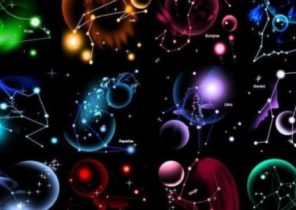The eRosita space telescope sent the first picture of the entire sky in the x-ray spectrum.
Our eyes perceive only a tiny fraction of the entire spectrum of light. We are sensitive to photons within a certain range of energies from red to violet. Anyway, there are many invisible photons, in particular, those that have less energy since the infrared. Then we go into the sphere of Miko-and then radio waves (they are millimeter, centimeter, decimeter, meter, etc.). All these photons are studied in “cold” matter.
In addition, there is a whole range of photons which have higher energy than violet: ultraviolet, x-ray and gamma radiation. As you probably guessed, the sources of these rays becomes a “hot” matter. Our Sun also emits a small number of such photons, but the main part of its activity is concentrated in the visible spectrum (this is no accident: our vision adapted to the light of our star).
View of the universe in the visible spectrum, of course, is of interest to astronomers, but this is only one side extremely versatile pattern. It’s the same thing that to look at the canvas impressionist in black and white.
Although we on Earth have access to part of the low-energy photons to look at the universe in high-energy spectrum much harder. The fact that our atmosphere is almost completely eliminates this radiation (by the way, this is good news: it breaks a complex molecule, including those created by living organisms such as DNA…). In addition, these photons are less common. Thus, to obtain this valuable information we need to send into space a high-precision tools.
Incomparable quality
This is what makes Russian-the German eRosita telescope on Board the Russian satellite “Spektr-RG” (in this space Observatory has another x-ray telescope, which is sensitive to more energetic particles). It was launched rocket “proton” from the cosmodrome “Baikonur” on July 13, 2019 and entered the orbit at a distance of 1.5 million kilometers from Earth (about four times the distance to the moon).
For the six months eRosita made up the first complete image of the sky, which is characterized by the incomparable quality and was made public last week. The previous one was created by the German telescope Rosat, which was launched in 1990. “An impressive result, says an expert on high-energy Barre Didier (Didier Barret) from the Institute for planetological and astrophysical research. — They found about a million sources — a number comparable to what was known to us to this day…”
“Data collection went almost flawlessly, emphasizes his colleague Nicolas Clerc (Nicolas Clerc), one of the few French in the eRosita consortium. — We can use 97% of the made observations. And this is only the first of the eight studies that will be conducted over four years. Using overlapping data we can find more weak or distant sources.”
On the overall picture, the vast majority of the white dots aren’t stars, and active galactic nuclei. That is, supermassive black holes (their mass billions of times greater than our Sun) that absorb the substance. The process of destruction of gas and dust is so aggressive that leads to the formation of a powerful x-ray radiation. “It accounts for about 80% of all x-ray sources on the map,” explains responsible for the cosmological analysis of the data eRosita Comparat Johan (Johan Comparat) from the max Planck Institute of astrophysics.
In this regard, the greatest interest among the specialist calls another type of object: cluster of galaxies. These groups, which include from hundreds to thousands of galaxies, bathe in the clouds of a highly rarified but extremely hot (tens of millions of degrees) gas. One liter of the volume there accounts for less than one atom (in the air 50 000 000 000 000 000 000 000 atoms per liter), but these atoms is so highly excited as to be x-ray sources. “Although this gas is very tenuous, it dominates in clusters, because its mass is 5-10 times the weight, in fact, of galaxies,” — emphasizes the expert.
A total of eRosita was able to identify 20,000 groups in the study. Next is a small, blurry white dots at the edges of the image. Nevertheless, the majority are very far from us. “Now the goal is to determine the distance to them and see how their distribution changes over time”. After all, the farther we look, the more go back in time (the light gets to us instantly). In this case, we can look at 10 billion years ago (for reference, the age of the universe is estimated at 13.8 billion years). “Clusters are at the intersections of the cosmic filaments that outline the deep structure of the universe, — said the expert. — Considering the distribution of clusters, we can see how it could change this structure, which will affect the development patterns of the universe.”
Fake color
If you look closer, the map is dominated by dual x-ray sources in our own galaxy. These pairs typically include a superdense body, for example, a black hole that absorbs a nearby star. As you can guess, this process is accompanied by a rapid release of energy. This includes in particular the blue dots at the equator of the image. Very large and bright white dot in the middle of the map. This Scorpio X-1, neutron star, which absorbs the substance neighboring the star. It is located 9 000 light-years from us (for comparison, our galaxy is about 100 times larger) and is the most powerful x-ray source in our sky.
It should be noted that the colors in this image do not correspond to reality. Experts noted the low-energy red emission, green — emission average, and blue — the most high-energy sources. A combination of three colors (their intensity depends on the number of trapped photons) draws a General picture in the visible spectrum. A reddish veil on the picture is the Local bubble, the cloud of hot gas that envelops our Solar system and may be a result of the explosion of one or more supermassive stars millions of years ago.
Yellow spots on both sides of the equator of the Fermi bubbles. These open in 2012, the education, apparently, is connected with the center of the galaxy, and possibly supermassive black hole Sagittarius A. They could appear about 3 million years ago, when this cosmic monster was more active than now, and were eating gas, stars and dust. Maybe with eRosita data will allow us to learn more about it.







